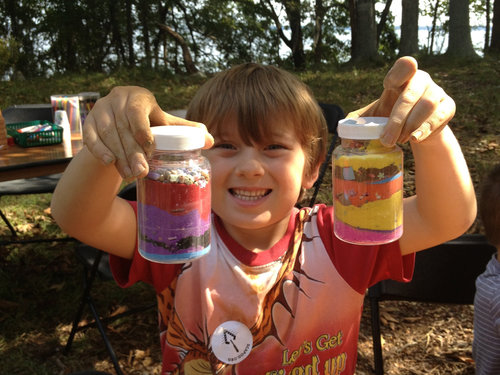Archaeology in the Classroom
Due to these changing times and concerns with in-person programming we’ve decided to bring archaeology in the classroom directly to you! Check out some of our most popular programs below and click the link for an outline of how to do the program in your own home or classroom.
Archaeology in the Classroom lesson plans are designed to introduce interactive archaeology programs to students of all ages. The study of archaeology can be used as a pathway to teach students about science, math, social studies, literature, and our shared cultural heritage. An Archaeology in the Classroom program includes a brief overview of what archaeologists do, what archaeology is, and hands-on activities to reinforce archaeological concepts. Click on a program below for a full lesson plan of each activity.
Activities
SCAPOD activities are designed to use archaeology as a tool for teaching about anthropology and our shared cultural heritage. Some activities can be tailored to each location in order to teach archaeological concepts that meets your needs and interests. Please contact SCAPOD for assistance in altering a program to better meet your needs.
Writing supplies such as pencils, ballpoint pens, and even commercially made ink were not always available to people of the past. Sometimes ink needed to be made with whatever was on hand. In this colonial-era activity, students learn to make ink out of berries, salt and vinegar. Students then have the chance to write or draw with their newly-made ink using feather quills.
This activity is designed to help participants express themselves through visual symbolism. Each participant will use air-drying clay to make a clay gorget that says something about himself/herself. Student can then take their gorgets home.
This activity allows participants to create their own pottery using air-drying clay following a lesson on prehistoric and historic pottery types. Participants will be given the freedom to express their creativity in this activity by designing a pot they will be proud to take home. Pottery tools (i.e., coil paddles, carved paddles, bamboo) will be provided to assist participants in their pottery designs.
Participants in this activity will learn about the concept of stratigraphy, or the geological layers in the soil. Following the directions given in a narrative that illustrates how archaeological sites are made, participants will create their own archaeological site using a clear plastic jar, colored sand, and small “artifacts”. Participants can then take their archaeological sites home to enjoy and describe to their families!
pottery re-fit
This activity is designed to help participants learn about techniques used by archaeologists in the lab. They will decorate small ceramic pots (one per participant), then drop them to re-create the numerous pieces archaeologists usually find in the ground. Using glue and puzzle power they reassemble their pots to take home.
Looking for additional archaeology-related activities? Check out more Lesson Plans!





